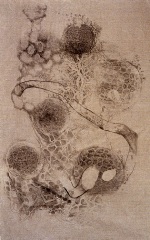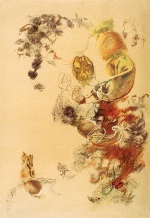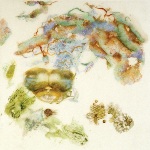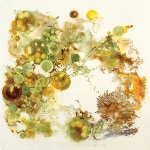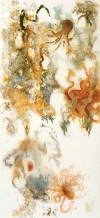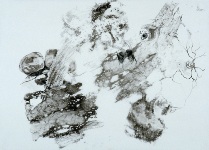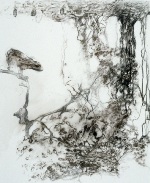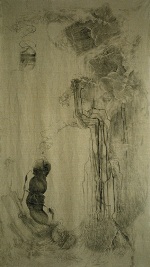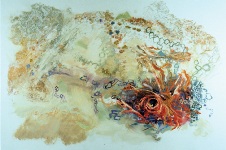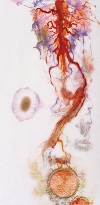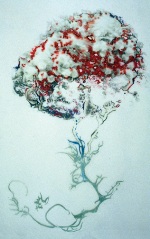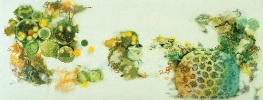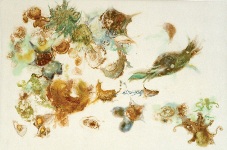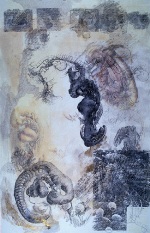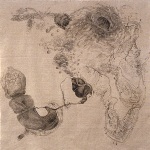Winter 2005, Volume 22.2
Art
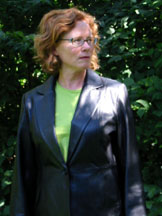
Jane Catlin
Adaptations: Seeking Survival in a Small World(s)
Jane Catlin (BFA, Utah State University; MAE, MFA, Rhode Island School of Design) is the recipient of several awards and grants, including a Pollock-Krasner Foundation Grant. With assistance from Utah State University's New Faculty Research Grant, she lived in Mali, West Africa, where she studied mud cloth painting. She has exhibited extensively across the United States, including the Millennium Art Center in Washington, D.C. A frequent speaker and advocate, Jane recently returned from Seoul, Korea, where she exhibited at Gail Art Museum and lectured as Visiting Professor at Sungsing Women's University and Kookmin University. Currently, Jane lives in Logan, Utah, where she is Associate Professor of Art Education at Utah State University.
Concerns about the diminishing quality of our air and water have been the driving force behind my sequence of mixed media, which explores environmental degradation. I find the divisions between painting, drawing, sculpture, photography, and film to be more than a little blurred. On linen or frosted mylar, I synthesize painting, drawing, and printmaking to construct biological forms that symbolize spiraling changes brought on by rapid population growth and rampant industrialization. Adaptations refers to the alterations, or changes, organisms go through in order to survive change—environmental and otherwise.
(Click on the picture to enlarge)
My earlier images are drawn on linen or canvas using lithography crayons. The idea of drawing on linen is a result of studying mud cloth in Mali, West Africa. My more recent images are done on mylar because it holds oil paint, gouache paint, colored pencils, and lithography pencils well. The sheets can be stacked, rolled, and easily transported. All of these works juxtapose the natural, the microscopic, and the imaginative life of familiar organisms in changing environments. Reduction (facing page), for example, shows a single white blood cell infected with an HIV-virus magnified 24,000 times. The small fetus skeleton suspended beneath it represents a certain innocence and vulnerability—one we all share.
I am especially interested in how everything is connected—how everything affects and is affected by everything else. This interdependence is the nature of things. Understanding this concept is the key to environmental responsibility.
Although I am deeply concerned for our degraded environment, my work does not focus on the negative. It attempts a broader and more intricate view and reflects both my apprehension as well as my trust in adaptation and change. I am attracted to the beauty of microscopic worlds here on this planet as well as those beyond—our extended solar system. Currently, the new planets scientists are finding hold my interest. My newest work will include planets and stars—dead and alive—collaged with closer organisms. My view is a dynamic one—everything always "becoming."

